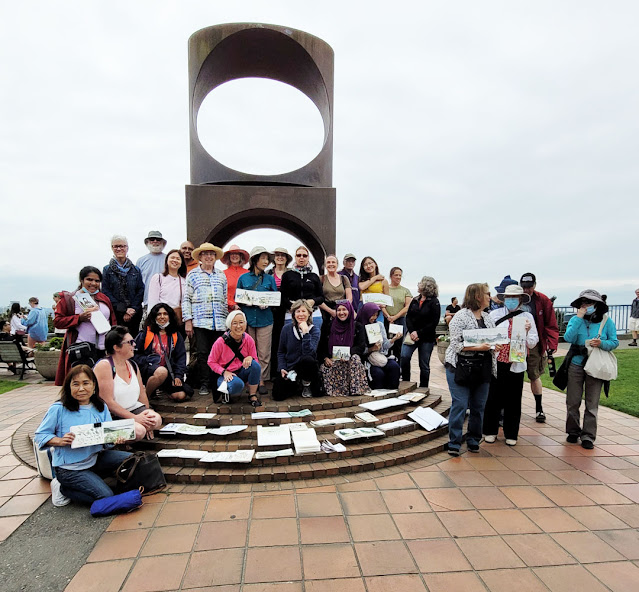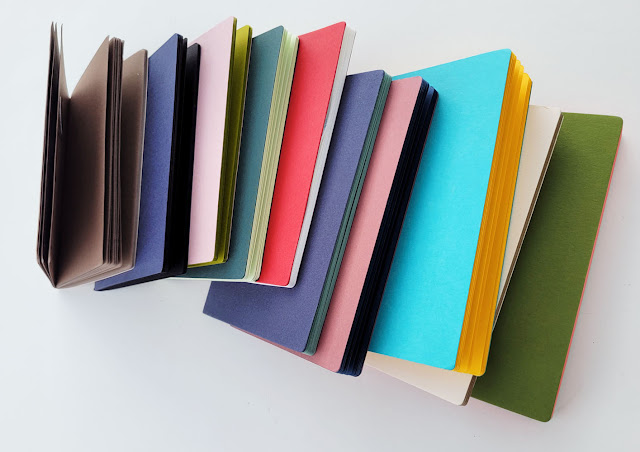 |
| Very pretty Uglybooks! |
Readers of this blog know that although I am loyal to my
primary sketchbook brand (Stillman & Birn for many years and currently
Hahnemühle), I can be fickle about my secondary sketchbook. The latter
is my small, daily-carry notebook that contains casual walk-taking sketches, thumbnail studies, notes, skyscapitos, written observations,
backyard bunnies and raccoons, phone numbers, shopping lists and
other random what-not. Since the sketches are often made with nothing more than
pencil or marker, the paper doesn’t have to be great, but I’m thrilled when it
can take a light wash.
For years, I tried every pocket-sized notebook on the
market, hoping to find one with paper that could meet my demands. Frustrated, I even made my own for a while. Eventually, instead of continually being annoyed
that notebooks intended for use with pencil or ballpoint couldn’t accommodate
water-soluble materials and juicy fountain pens, I asked myself: Why not just
sketch with simple media that these notebooks were made for? I changed my
attitude instead of my notebook. Most Field Notes Brand notebooks have met
my needs adequately, if not ideally, and I’ve been adequately happy. I
stopped shopping around.
 |
| Product info is on the outer wrapper only. |
Fast-forward several years, when someone who knew I enjoyed
using red Field Notes Sweet Tooth edition notebooks contacted me: Did I
know about Uglybooks?
Made in New York, Uglybooks are simple, staple-bound,
pocket-size notebooks like so many others on the market – with two significant
differences: They contain 48 pages of unruled, 80-pound paper, and the
paper inside is colored. I had never seen a pocket notebook with
80-pound paper of any color! Excited about both features, I ordered cautiously
(I’ve been disappointed too many times by other claims of high-quality paper).
The product description and main branding appear only on the
plastic wrapper. When removed, the wrapper reveals covers that are entirely
blank – an ideal blank slate for stickering or drawing on. The only branding
that remains is a logo on the back cover.
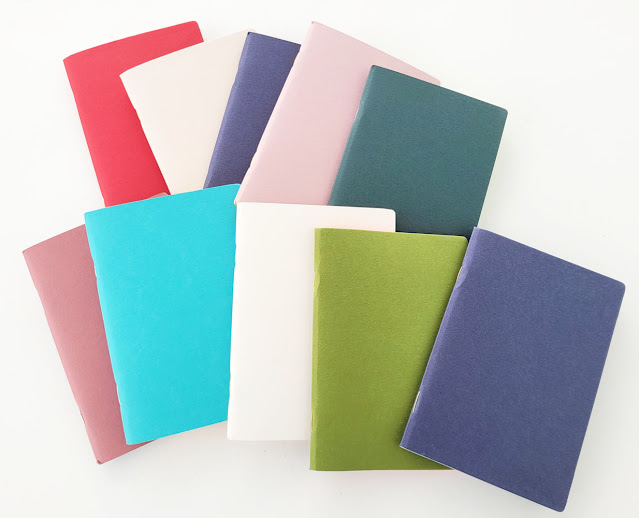 |
| 111-pound cover stock in bright colors |
 |
A great place for a sticker (this one is from my favorite
bag maker, Rickshaw) |
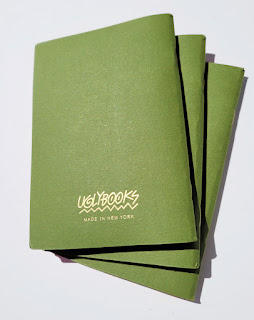 |
| Logo on the back is the only branding. |
The colored covers contrast well with their interior papers.
While design is minimal, it’s clear that someone is having fun pairing paper
colors and naming themes.
 |
| Contrasting covers and innards. |
The “No. 1 Tall” size I bought is 4-by-5 ¾ inches, which is
right between the classic pocket size of 3 ½-by-5 ½ inches and the Field Notes Signature edition (alas, no longer available), which is 4 ¼-by-6 ½
inches. Uglybooks are also available in a “No. 2 Wide” 8-by-5 ¾ landscape
format. Although the classic pocket size is fine for thumbnails, I’ve always
felt a little cramped otherwise. Uglybooks are an ideal size – large enough to
sketch comfortably, yet small enough to fit in a bag pocket or my smallest fitness-walking bag.
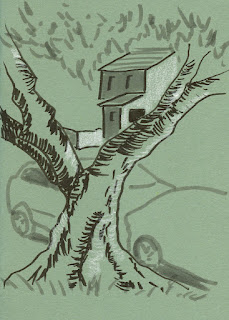 |
7/8/22 gray and black brush pens,
white colored pencil |
At three books for $16, the pocket-size Uglybooks are priced competitively for a slightly larger size and heavier paper. The larger landscape-format books are three for $30. (It’s worth noting here that when I had a minor shipping issue, customer service took care of me immediately. I don’t take good customer service for granted anymore – it’s worth a lot to me.)
All books feature hefty paper inside and out: 111-pound
cover stock and 80-pound interior paper. “Because the paper in Uglybooks are so
colorful and durable, we encourage you to try out whatever type of mark-making
utensil you have!” says Uglybooks. Challenge accepted!
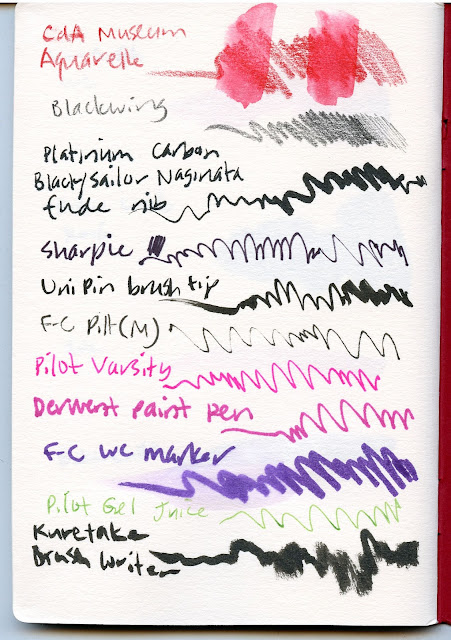 |
| Media tests 1 |
 |
| Reverse side of media tests 1 |
The paper surface is mildly toothy but has no visible pattern (in fact, it’s similar to my current favorite drawing paper, Stonehenge Lenox Cotton). Media tests yielded no surprises. The only materials that
bled through were the Sharpie, Derwent paint pen (minimal) and juicy washes of watercolors. I wouldn’t
recommend this paper for watercolor painting, but light, dry-ish washes are
fine. (Edited 7/29/22: Customer service confirmed that the paper is acid-free.)
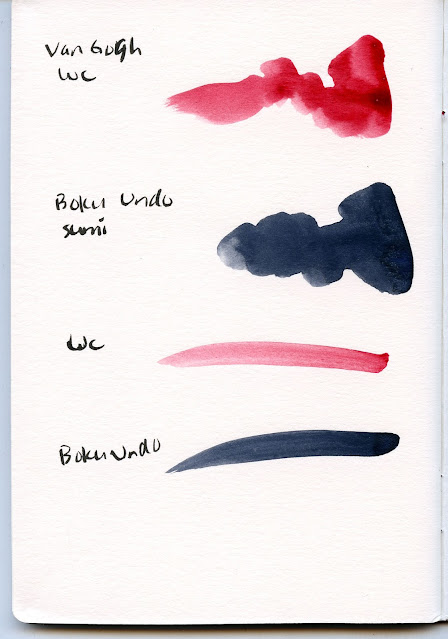 |
| Media tests 2 |
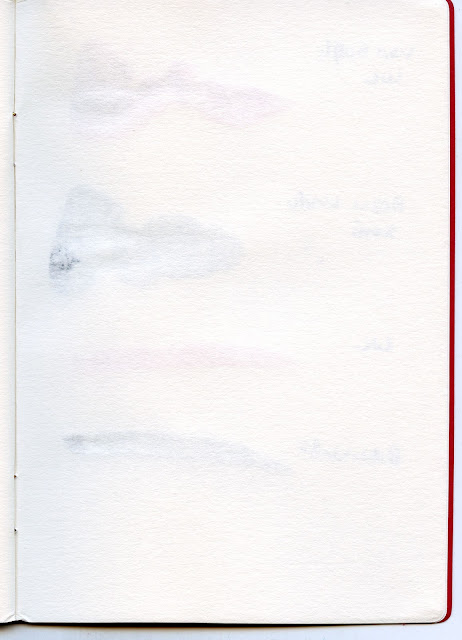 |
| Reverse of media tests 2 |
Long before I made the test swatches, I took an “Atlantic” book (navy cover with mossy green interior) out for field testing. The green is just the right midtone for use with a black brush pen and a white pencil or gel pen, my favorite combo for quick urban sketches and value studies. My juiciest brush pens and Sailor Naginata fude fountain pen, which usually bleed through
notebook papers, were no match for this 80-pound Uglybook paper!
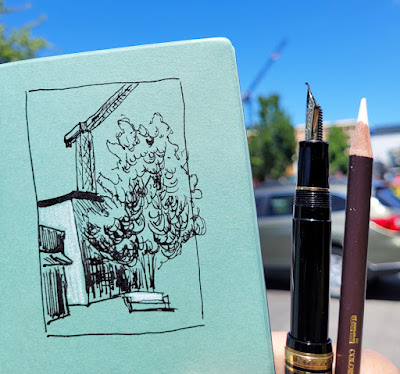 |
7/13/22 The juicy Sailor fude nib was no match for this hefty paper! No bleeding or feathering at all.
(This photo does not show the color accurately; actual color is closer to the scanned image below) |
 |
| 7/5/22 Gray and black brush pens, colored pencil |
The “Cane” book (red cover with white interior paper) became my field test for water-soluble colored pencils. The paper took light waterbrush washing better than other notebooks I’ve tried – no buckling or bleeding. Although the sizing is probably not intended for watercolors, it was enough to keep my Caran d’Ache Museum Aquarelle colors true. The
only treatment the paper couldn’t handle was a heavy water spritz, which caused
the color to bleed through to the reverse side, and the paper buckled.
 |
| 7/12/22 Museum Aquarelle water-soluble colored pencils washed lightly |
 |
| 7/14/22 Museum Aquarelle spritzed with water |
 |
| Reverse of spritzed sketch at left |
I was impressed! In my next order, I didn’t hesitate to get
all the colors I wanted, and it’s a good thing I didn’t. When I went back to the
site a week or so later, all the color options had been changed – and the colors I had ordered previously were no longer available! Uglybooks are apparently limited
editions, which means that if I really like one, I’d better hoard buy extras! (I’m guessing that white interior paper is always available.)
An interesting addition was the “Mystery” pack, which
promised “cover and interior pages picked completely at random.” Who could
resist that? Spoiler alert: Here’s what I got – that yellow looks very
promising! I don’t know whether every Mystery pack purchase contains the same
three colors, or distribution is truly random, but either way, it’s fun to get
a surprise.
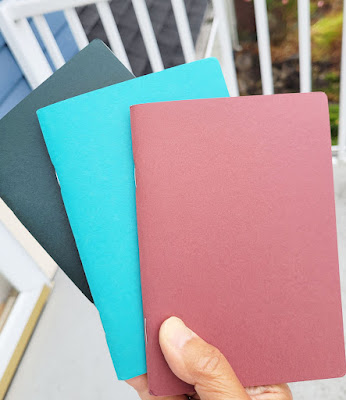 |
| The Mystery Pack I received contained these three books |
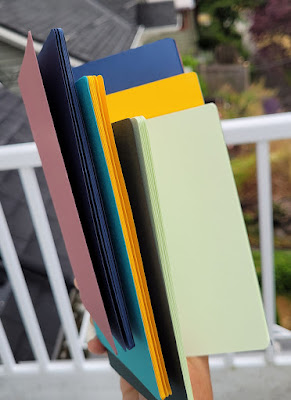 |
| I love the yellow paper with sky blue cover! |
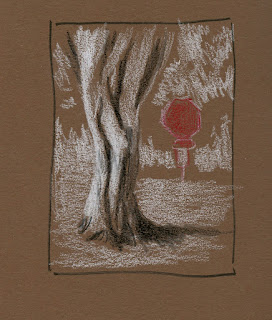 |
| 7/6/22 colored pencil |
I’m picky about midtone colors for tonal sketching: The colors must have enough contrast with both white and black. I’m looking forward to trying pinky-red “Watermelon” and bright avocado green (called “Grunge”), which look like they have potential. I’ve already tried the dark brown “Smores,” at left (I showed more a few days ago), but it’s a little too dark as
a midtone. Opaque, light-colored markers and colored pencils pop on it, though.
I’ll try it this winter for night sketching, which is also my intention
with the black paper of “Lost at Sea.”
As my secondary sketchbook, Uglybooks are a winner! A great
size, unruled, high-quality, 80-pound and colored paper – Uglybooks, where have
you been all my life?
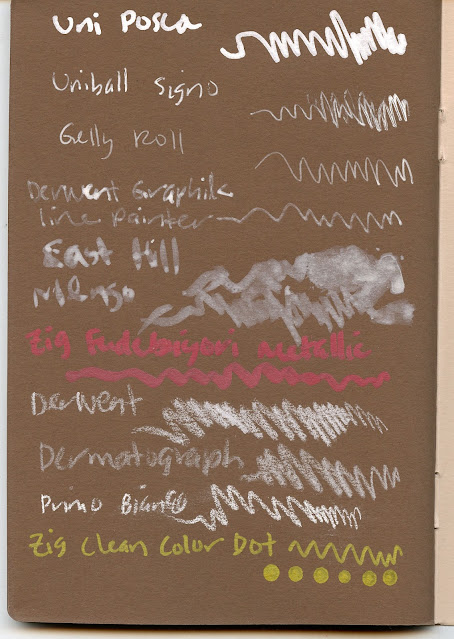 |
| Media tests 3 on "Smores" paper |










































.jpg)
